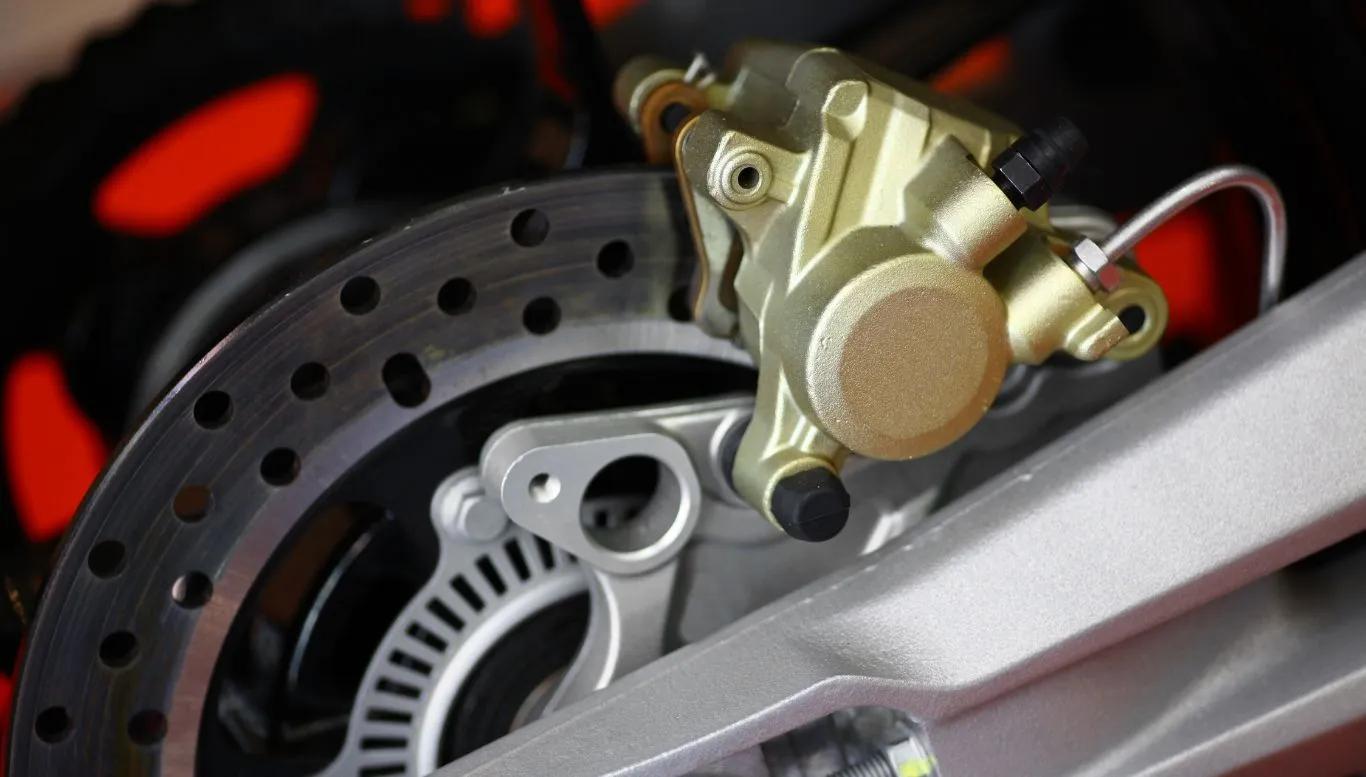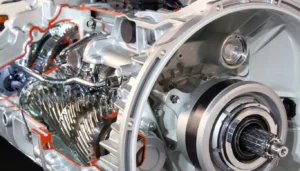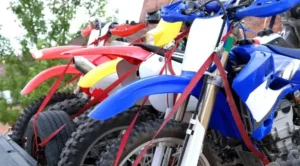Motorcycle enthusiasts, have you ever been halted in your tracks due to brake problems? Understanding common brake issues and their remedies can help you enjoy a smooth and safe ride. Our guide is specifically designed to navigate you through prevalent motorcycle brake problems, allowing you to keep your machine in optimum condition.
If you’ve often contemplated, “Why does my brake feel spongy?”, or “Why are my brakes squealing?”, you’re certainly not alone. These are common concerns among motorcyclists worldwide. We’re here to demystify these issues and provide practical advice to best address them. So, get ready to dive in and enhance your knowledge about motorcycle brake problems.
Unveiling the Hidden Dangers of Faulty Motorcycle Brakes
‘s little denying that properly functioning brakes are of paramount importance when it comes to ensuring your safety on a motorcycle. Brake malfunctions can pose significant risks, from minor accidents to serious, life-threatening crashes. This guide will help you understand the common brake issues that motorbikers frequently encounter, and the practical solutions to mitigate these problems for a safer riding experience.
Common Brake Problems and Their Solutions
Motorcycle brake problems vary widely, but some issues are more prevalent than others. Whether it’s ineffective brakes, irritating noises, or brake fluid leakage, it’s crucial that you’re aware of these potential issues and how to address them.
1. Worn Brake Pads: The Silent Assassin of Motorcycle Safety
We bask in the exhilaration of speed every time we ride motorcycles, yet we often overlook the essential components that guarantee our safety amidst all this thrill – the brakes. Among various parts of a braking system, brake pads are prone to wear and tear, posing significant risks while riding. They may look small, but these silent elements are the undeniable safeguarding assassins of motorcycling safety if neglected.
Spotting Signs of Worn Brake Pads
A decrease in braking effectiveness, a squeaking or grinding sound, or a pulsing brake lever are all telltale signs that your brake pads may be worn out. Keep in mind that these signs are your motorcycle’s desperate cries for help, warranting immediate attention.
The Causes: Why Do Brake Pads Wear Out?
High friction and heat during application contribute to gradual brake pad wear. Furthermore, consistently heavy braking, aggressive riding, and using lower-quality pads can accelerate this wear.
Bite Back: Replacing Worn Brake Pads
Replacing worn brake pads promptly is non-negotiable for your safety. It’s a straightforward task that can be handled in your garage with the right set of tools. Remember to choose high-quality pads to enhance braking effectiveness and prolong the lifespan of your brake system.
Maintenance is Key: Brake Pad Inspection
Regular inspections can extend the life of your brake pads while ensuring optimal riding safety. Look for signs of breakage, extreme thinning, or uneven wear. A proactive approach to brake pad maintenance can save you from possible catastrophic disasters on the road, protecting both you and your pocketbook from unnecessary damages.
2. Brake Fluid Issues: The Lifeblood of Braking System Performance
Your braking system’s performance hinges on the condition of your brake fluid, often termed as the ‘lifeblood’ of the system. If your motorcycle experiences brake-related issues, it’s likely that the fluid could be the culprit. With this essential factor playing such a vital role in your motorcycle’s safety, it’s crucial to understand the common problems and solutions associated with fluid.
Recognizing the Symptoms of Brake Fluid Problems
Several telltale signs can indicate problems with your brake fluid. These include decreased brake performance, a squeaking sound when applying brakes, or the presence of a warning light on your dashboard. If you come across any of these red flags, consider that it might be time to check your brake fluid.
Fluid Conundrums: Dirty or Low Brake Fluid
Brake fluid can either become dirty over time due to the accumulation of dust, debris, or water, or its level could drop due to a leak in the system. Both situations can lead to compromised brake performance, making your ride potentially unsafe.
Tackling the Issue: Brake Fluid Replacement
To resolve issues linked to dirty or low fluid, a complete brake fluid flush is recommended. This process entails draining out the old fluid, cleaning the entire system, and then refilling with fresh fluid to maintain peak braking power.
Staying on Top: Regular Brake Fluid Checks
Prevention is always better than cure. Regular brake fluid checks should be a part of your routine motorcycle maintenance. This habit allows early identification of any potential issues, ensuring that you can address them promptly before they escalate into larger problems.
3. Brake Caliper Troubles: The Culprit Behind Uneven Braking
Experiencing irregular or uneven braking when riding your motorcycle can be unnerving. The common perpetrator of this issue is often brake caliper troubles. These component malfunctions can jeopardize not only your riding comfort but also your safety on the road. Therefore, deep dive into understanding brake caliper problems, where they stem from, how to tackle them, and the importance of regular maintenance becomes paramount.
Identifying Brake Caliper Problems
Identifying a brake caliper issue begins with being aware of its symptoms. Unstable braking, pulling to one side when braking, or unusual noises during braking are all red flags that indicate potential brake caliper issues. It’s also possible for a malfunctioning brake caliper to cause the brake pads to wear unevenly. And in the worst case, the caliper can get stuck, causing the engine to work harder, which can even affect your motorcycle’s fuel efficiency.
Causes: Why Do Brake Calipers Malfunction?
Calipers are known to malfunction due to a variety of reasons such as accumulated dirt, corrosion, or even due to the aging of the brake fluid. The caliper pistons can become corroded over time, mainly if exposed to excessive moisture, causing them to be stuck or seize altogether. In other cases, worn-out brake fluid can cause the rubber seals to deteriorate, affecting the functioning of the brake caliper.
Rectifying the Problem: Repairing or Replacing Faulty Brake Calipers
Repairing a faulty brake caliper generally involves cleaning and lubricating the moving parts or replacing the piston seals. However, if your brake caliper is heavily damaged or corroded, replacing it entirely might be a more reliable solution. Always seek professional help when dealing with brake calipers. A skilled mechanic can diagnose and fix the issues correctly, ensuring your brakes function as they should.
Caliper Maintenance: The Key to Consistent Braking Performance
To prevent brake caliper troubles, ensure regular inspections of your bike’s brake system. This involves checking and cleaning brake caliper components and changing the brake fluid at proper intervals. Maintenance for calipers may seem time-consuming, but a well-operating brake system can vastly improve your ride’s stability and safety on the road.
4. Warped Brake Discs: The Enemy of Smooth and Consistent Braking
A warped brake disc can disrupt the functionality of your motorcycle’s braking system, rendering it inconsistent and less reliable. This can drastically impact the smoothness of your ride and may pose significant safety issues. Let’s delve deeper into understanding this problem and finding optimal solutions.
Pinpointing Warped Brake Disc Symptoms
To detect a warped brake disc, you need to be alert to irregularities in your ride. If you feel a judder or pulsating motion when you apply the brakes, chances are you are dealing with a warped disc. Also, you may notice your bike’s tendency to pull to one side while braking, another red flag indicating disc issues.
The Root Causes: How Do Brake Discs Become Warped?
Brake discs can warp due to numerous factors such as excessive heat, improper torquing of the wheel’s lug nuts, or the natural wear and tear of the disc. Severe braking, especially at high speeds, can also contribute to warping as the extreme heat generated can distort the disc’s shape.
Finding a Solution: Dealing with Warped Brake Discs
Resolving a warped brake disc issue depends on its severity. If the warp is mild, a process known as disc resurfacing can rectify the issue. If the warping is significant, however, replacement might be the only viable option. Remember, safety should never be compromised for cost efficiency.
Maintaining Disc Health: Prolonging the Life of Your Brake Discs
Preventive care is essential in mitigating the risk of brake disc warping. Regular inspections, avoiding abrupt and severe braking, and ensuring your wheel’s lug nuts are properly torqued can all contribute to preventing a warped disc. Moreover, if you often ride in challenging conditions, consider upgrading to high performance discs designed to withstand additional stress.
5. Brake Line Problems: Understanding the Risks of Leakage
Motorcycle riding can be a thrilling experience, but it’s imperative that all aspects of your bike operate effectively to ensure your safety. One aspect we often overlook is the brake line issue, primarily leaks. It might seem minor until you’re on a steep slope and need all the stopping power you can muster.
Unmasking Brake Line Leaks: Signs You Shouldn’t Ignore
Observing your motorcycle closely is key to spotting early signs of brake line issues. One classic indication of this problem is the presence of a puddle of brake fluid underneath your motorcycle. You might also encounter difficulties in braking, sensing a spongy feeling when you press the brake lever or pedal. Indeed, these can augment the risks of accidents, making it crucial to address the issues early and promptly.
Exploring the Causes: Why Do Brake Lines Leak?
Leaky brake lines can occur due to several reasons. Often, wear and tear from regular use or harsh environmental conditions can cause the rubber parts of your brake system to deteriorate. Also, damages from accidents or mishandling during maintenance procedures can contribute to leakage. Ensuring proper care and handling can help mitigate these issues and prolong your brake lines’ lifespan.
Fixing It Right: Addressing Brake Line leaks
Once a leak is suspected, swift action is required. Begin by identifying the source of the leakage – a thorough inspection can aid this. After locating the source, consider replacing the faulty part. If the leaking section is a minor part, it may require only that part to be replaced. Nevertheless, if the leakage is vast and extends to significant parts, it might be best to replace the whole brake line to avoid further complications.
Consistent Vigilance: Regular Check-ups for Your Brake Lines
Keeping brake line issues at bay involves regular maintenance checks. Ensure to inspect your brake lines whenever you carry out general motorcycle maintenance. Look for signs of wear, like cracks, bulges, or leaks. By maintaining a routine check and taking immediate action at the sign of any issue, you can prevent small problems from escalating into larger, more dangerous ones.
6. Overheating Brakes: The Peril of Aggressive Riding and Heavy Loads
Riding on two wheels may provide an exhilarating thrill, yet it does not come without its fair share of hurdles. A common challenge most riders face, particularly when carrying hefty weights or embracing a more aggressive riding style, is the daunting concern of brakes overheating. Confronted with high temperatures, the efficiency of your motorcycle brakes may decline, possibly pushing you into precarious situations.
Decyphering the Overheating Phenomenon
Brake overheating is a condition that arises when the heat generated from aggressive use of brakes outpaces the system’s ability to disperse it. This can alter the behavior of various brake components, leading to a decrease in braking performance or brake fade.
Culprits Behind Overheating Brakes
Heavy braking, unusually large payloads and high-speed downhill descents are the primary factors contributing to overheating brakes. In some cases, a lack of maintenance and ventilation can exacerbate the problem.
Putting Out The Heat: Solutions For Overheating
The main solution for overheated brakes is to allow them to cool down. Reducing speed, lightening loads and driving conditions can also prevent overheating in the long run. Remember, regular maintenance checks can avoid the issue altogether.
Brake Heat Management: Prevention is Always Better
Preventive measures include regular inspections particularly after heavy riding sessions, upgrading to higher performance brake units suitable for your riding style, and proper maintenance of your motorcycle’s brake system.
7. Brake Fade: A Sneaky Phenomenon That Can Jeopardize Your Safety
Brake fade – the term might sound unfamiliar but this tricky phenomenon can be quite a safety threat when overlooked. Don’t be apprehensive if you’re unaware – that’s exactly why we’re here! Just when you think you know every possible brake issue that your motorcycle can have, brake fade comes into the picture. It’s a subtle yet serious brake problem and like all other motorcycle brake issues, it has a solution. Read on!
Recognizing the Ghost: Spotting Brake Fade
Brake fade is essentially a condition where your brakes lose their stopping power or efficiency after repeated use. This often arises during prolonged periods of heavy braking, for example, during long descents. Symptoms often include the need for more pressure on the brake lever or pedal to slow down the motorcycle, and a spongy or vague feeling when applying the brakes. You may also notice an unusual burning smell.
What’s Behind the Curtain: Causes of Brake Fade
Brake fade generally occurs due to the excessive heat generated through continuous braking, causing the brake pads or discs to overheat. The heat can burn off the gases from the brake pad material, creating a thin layer of gas between the disc and the pad, which effectively reduces the friction and, consequently, the braking power. Another cause could be the “glazing” of the pad, a process wherein heat changes the pad surface, making it smooth and less effective.
Banishing the Ghost: Dealing with Brake Fade
Averting brake fade primarily involves keeping your brake system cool. One way of achieving this is by using engine braking effectively alongside your disc brakes to regulate speed. Choosing high-quality, heat-resistant brake pads or discs can also help. If you experience brake fade, stop and allow your brakes to cool. Furthermore, regularly inspect your braking system for wear and tear.
Keeping the Ghost at Bay: Preventing Brake Fade in the Future
Routinely checking your brakes is the key to preventing brake fade. If you spot a glossy sheen on brake pads, it’s likely they’re glazed and you should replace them. Be mindful to use your brakes sparingly to avoid overheating. Learn to use your brakes in conjunction with your engine’s braking power and always opt for high-quality parts designed for heavy-duty use.
8. ABS Malfunctions: Debunking the Myths and Solving the Mysteries
A common misconception among riders is that Anti-lock Braking System (ABS) problems are complex, unsolvable issues. However, in reality, minor ABS issues can be fixed easily if diagnosed correctly. Troubles with ABS may stem from sensor malfunctions, worn brake pads, or faulty control modules, but understanding these problems can provide you with the necessary insight to solve them.
Understanding ABS Glitches: Signs to Watch Out For
Early detection is crucial to resolve ABS issues. Be alert to warning lights on your dashboard, unresponsive brakes, or unexpected sounds while braking. These signs may indicate a malfunction with your ABS. Ignoring them may lead to severe safety risks like brake lock-up or longer than usual stopping time.
The Nitty-Gritty: What Causes ABS Malfunctions?
Various factors contribute to ABS malfunctions. One of the most common culprits is sensor issues. The ABS relies on wheel speed sensors to function properly, so damaged or dirty sensors can cause problems. Other causes include worn brake pads preventing the ABS from functioning effectively, and faults in the ABS module that controls the entire system.
Cracking the Code: Fixing a Faulty ABS
Addressing ABS malfunctions can range from simple clean-ups to more advanced maintenance. Cleaning or replacing the sensors can solve many issues. If the problem is worn brake pads, do not delay changing them. The ABS module may also need repair or replacement. Always consult a trusted mechanic if you’re unsure.
Safeguarding Your Safety: ABS Preventive Measures
Ensuring the ABS is functioning optimally is something you should never bother to compromise. Regular inspection of your wheel speed sensors will help you prevent any issues from escalating. Brake pads should also be checked and replaced as needed to ensure maximum braking efficiency. Finally, even if there are no visible issues, having your ABS checked as part of regular bike maintenance is the smart move.
Preventive Maintenance: Keeping Your Brakes in Top Shape
Knowledge is power, and understanding the various problems that your motorcycle brakes might encounter is only half of the equation. The other half is preventive maintenance. By regularly inspecting and servicing your braking system, you can not only preempt potential hazards but also prolong the life of your motorcycle’s components and maintain optimal riding conditions. Let’s delve into how you can keep your brakes in top-notch condition.
Regular Brake Inspections: The Ruthless Guardian Against Brake Failures
Like a trusty guard, a routine brake inspection is fundamental to averting brake issues. By promptly recognizing signs of wear or damage, you can prevent minor problems from escalating into major faults. Inspect brake components such as the brake pads, rotors, and fluid levels at designated intervals. A service manual is a handy tool, guiding you on the recommended inspection intervals and procedures.
1. Regular Brake Inspections: The Key to Early Detection and Prevention
Regular brake inspections are an integral part of maintaining your motorcycle’s overall performance and safety. By adhering to a consistent inspection schedule, potential issues can be detected and addressed early, which can ultimately save you a lot of time, money, and unforeseen headaches down the line. Notably, regular brake inspections also greatly reduce the chances of catastrophic brake failure, ensuring that your motorcycle stops efficiently when it needs to.
Detecting Potential Issues in Advance
Regular brake checks can help identify potential faults in your motorcycle’s braking system early on. This might involve looking for wear and tear on brake pads, checking the brake fluid levels, or spotting signs of leakage around the brake line. By catching these issues early, you can take necessary steps to rectify them, preventing them from escalating into more serious – and potentially dangerous – problems.
The Inspection Process: What Should Be Checked?
- Brake Pads: Inspect your brake pads for excessive wear. If your brake pads are worn out beyond the recommended limit, it might be time for a replacement.
- Brake Fluid: Check for adequate brake fluid levels in the reservoir. Should the fluid be murky or low, logic compels us to change or top up the fluid respectively.
- Brake Lines: Make sure to check for any leaks or damages to the brake lines. Discernible discoloration or brake fluid patches on the ground where you park your motorcycle could suggest a leak.
Taking Immediate Action
If your brake inspection uncovers any concerns, it’s crucial to address them immediately. Whether you need to replace worn brake pads, flush and replace the brake fluid, or repair leaky brake lines, swift action can make the difference between a minor maintenance task and a major repair job – or worse, a catastrophic brake failure.
The Frequency of Brake Inspections
So, how often should these brake inspections take place? As a rule of thumb, a comprehensive brake check should be conducted every few months or every few thousand miles, depending on how frequently you ride. In addition, it’s advisable to perform a quick visual inspection of your brakes every time before you ride.
2. Brake Pad Replacement: Ensuring Optimal Stopping Power
Brake pads are one of the most fundamental components of your motorcycle’s braking system. Ensuring that they are in optimal condition is paramount not only to your bike’s performance, but more importantly, to your safety. Let’s delve into the importance of brake pad replacement, and equip you with the knowledge needed to ensure your bike’s stopping power is never compromised.
Recognizing the Need: When is it Time to Replace Brake Pads?
Your brake pads should ideally be replaced when they’ve worn down to approximately 1/8 inch thick, or if you notice any issues with your braking, such as squeaking or reduced stopping power. Being attuned to these signs allows for timely pad replacement, warding off potential accidents and brake system damage.
Beyond Just Bites: The Effects of Worn Brake Pads
Going beyond the direct impact on stopping power, worn brake pads may cause costly damage to other brake components. Similarly, they can significantly affect your bike’s overall ride and handling. Hence, timely replacement minimizes these risks, ensuring smoother, safer rides.
The Right Choice: Selecting the Best Brake Pads for Your Bike
It’s not enough to merely replace your brake pads; choosing the right ones – suited to your bike model, riding style, and conditions – is of equal importance. Take time to research and consult experts for advice, ensuring that your replacement pads enhance, not hinder, your stopping power.
Doing It Right: The Brake Pad Replacement Process
Armed with the right replacements, either seek professional help or do it yourself if you’re confident and equipped. The process includes removing the old pads, applying brake grease, and carefully installing the new ones. Remember, proper installation is key to brake performance.
Post Replacement Care: Ensuring Longevity of Your New Brake Pads
Once your new brake pads are installed, they need to be broken in, or “bedded” properly to ensure optimal performance and longevity. Avoid aggressive braking for the first 100 to 200 miles. Post-installation check-ups are critical too, ensuring your new pads are working well and lasting as expected.
3. Brake Fluid Flush: Flushing Out Potential Brake Problems
Just as the blood in our veins is crucial for our survival, brake fluid serves a vital role in your motorcycle’s braking system. Over time, contamination or decay can make your brake fluid less effective. It’s important to understand how a brake fluid flush can mitigate potential brake problems, ensure responsive and effective brakes, and prolong your motorcycle’s overall lifespan.
Spotting the Need for a Brake Fluid Flush
Signs that your motorcycle might need a brake fluid flush include a spongy or soft brake lever, discoloration of the brake fluid, or the motorcycle struggling to stop effectively. These signs often emerge because of water contamination or the natural decay of brake fluid over time, making the fluid less effective.
Causes: What Contaminates Brake Fluid?
Brake fluid can become contaminated by dust, debris, or even water vapor that enters the brake system. Their presence within the fluid can compromise its effectiveness because these contaminants can change the fluid’s viscosity and boiling point. The outcome is often reduced braking performance, risking your safety on the road.
Performing a Brake Fluid Flush
A brake fluid flush involves replacing all of the brake fluid in your system with fresh fluid. This process is crucial in maintaining the optimal performance of your motorcycle’s braking system. It’s recommended that a professional mechanic perform this operation to ensure all contaminants are removed, and the correct type of brake fluid is used.
Maintaining Your Brake Fluid’s Health: Regular Checks
Regular brake fluid checks can keep you ahead of potential brake problems before they become too severe. A good rule of thumb is to check your brake fluid every month. If the fluid looks dark or rusty, consider a brake fluid flush to ensure your safety on the road stays uncompromised.
4. Caliper Service: Restoring the Balance in Your Braking System
Just as two feet need to work in unison to maintain balance while walking, your motorcycle brake calipers should function cohesively to ensure a controlled and smooth stop. Regular servicing of the calipers can save you from potential uneven braking and preserve the overall performance of your braking system.
Caliper Issues Unveiled: Spotting Early Indicators
The signs of caliper problems can often be elusive and easily missed. However, you may notice uneven tire wear or your motorcycle pulling to one side when braking. Also, keep an eye out for fluid leaks or an uncommonly firm brake lever, as these could be symptoms of beleaguered calipers.
Root of the Issue: Causes of Caliper Dysfunction
Caliper malfunctions often stem from lack of maintenance, excessive brake dust, or overuse. If riding conditions are harsh—with dirt, debris, or road salt—it could affect the health of your calipers as well.
Restoring Balance: Servicing and Replacing Calipers
Servicing your calipers necessarily involves cleaning them thoroughly to remove brake dust and grit. But if the problem persists, you might need to replace the brake caliper completely — a job professionals can handle with finesse. Whenever you’re replacing a brake caliper, consider doing it for both sides to ensure uniform brake power.
Maintaining Caliper Health: Regular Maintenance Tips
To keep your brake calipers in optimal condition, include them in your regular servicing routine. Maintain cleanliness, lubricate moving parts sparingly, and replace brake pads on time. Also, keep an eye on brake fluid levels, as the right amount ensures the correct functioning of your calipers.
5. Disc Rotor Maintenance: Resurfacing for Smooth Braking Performance
Keeping the disc rotors in prime condition plays a crucial role in maintaining the performance and safety of your motorcycle’s braking system. Regular inspection and maintenance, including tasks like resurfacing, can help ensure steady and reliable braking, extending the overall lifespan of your bike and ensuring your riding experience remains smooth and enjoyable.
Spotting the Need for Disc Rotor Maintenance
Recognizing the signs of rotor wear and tear is pivotal in maintaining your braking system’s efficiency. Symptoms may include reduced braking ability, a pulsating brake pedal, unusual noises like squealing or grinding, or visible grooves or ridges on the rotor itself. Taking the time to regularly inspect your rotors for these signs can help spot potential issues early, aiding in preventative maintenance and avoiding costly or dangerous problems down the line.
Underlying Causes: What Damages the Disc Rotor?
Rotor wear can be caused by a variety of factors, including aggressive riding styles, heavy loads, frequent brief stops, and environmental conditions. Overheating can also lead to warping or cracking of the rotor. These issues can lead to uneven braking, decreased stopping power, and increased risk of brake failure if left unchecked.
Revitalizing the Surface: The Process of Resurfacing
Resurfacing, also known as ‘machining,’ can often restore a disc to its optimum condition. This process involves removing a small amount of material from the disc’s surface to create a smooth, even area for the brake pads to grip. This should ideally be carried out as a preventive maintenance measure before the rotor reaches the wear limit.
Making it a Habit: Regular Rotor Check-ups
Ensuring regular inspection and maintenance of your disc rotors is vital in maintaining your motorcycle’s braking performance. Pre-ride checks can help identify rotor wear and establish if resurfacing is needed. Additionally, it’s essential to consult your motorcycle’s service manual or a professional mechanic to determine the appropriate intervals for deeper inspection and potential resurfacing.
6. Proper Brake Line Care: Avoiding Leaks and Ensuring Safety
Faulty brake lines are a clear and present danger that riders can face. They play a crucial role in the operation of your bike’s braking system, transferring brake fluid under pressure from the master cylinder to the brake calipers or drums. Leaking brake lines or those that are blocked can cause severe brake failure, putting you and others at risk. Therefore, let’s delve deep into how to spot potential problems, the causes behind them, and how you can tackle them effectively.
Signs of Brake Line Problems: Detecting Leaks On Time
It’s essential to stay vigilant and look out for signs of brake line issues. A noticeable decrease in the effectiveness of your brakes, hydraulic fluid beneath your motorcycle, or excessive pedal travel might indicate a leak. If such signs are noticeable, further investigation is a must.
Anatomy of the Problem: Causes Behind Brake Line Leaks
Brake line problems often arise due to deterioration and corrosion, especially in older motorcycles. Sometimes external damage from road debris can also cause the lines to rupture and leak. Regular inspection is your best defense against such issues.
The Fix: Addressing Brake Line Leaks
Fixing a leaking brake line is best left to professionals. They have the necessary skills and equipment to handle the high-pressure system properly. Always ensure that the repair or replacement is performed by certified professionals to regain that precise brake feel and effectiveness.
Preventive Measures: Keeping Brake Lines in Optimal Condition
Regular maintenance and periodic inspections are the best way to prevent brake line issues. Consider having your brake lines inspected annually or whenever you service your brakes. Ensure that the inspection includes checking for leaks, external damage, and signs of corrosion. The professional should also check that the lines are properly secured to avoid damage from road debris.
Conclusion: Empowering Motorcycle Riders to Conquer Brake Issues
Safeguarding the integrity of your motorcycle’s braking system is paramount to ensure a safe and enjoyable ride. The awareness and understanding of common brake problems often lead to timely identification and rectification, preventing potential disasters on the road. Let’s look at a recap of how you, as a motorbike enthusiast, can better understand and troubleshoot various brake issues and maintain your brake system effectively.
Diligence and Preventive Care
By regularly inspecting your motorcycle’s brakes, you’ll be alerted to early warning signs of potential issues. This might mean visually assessing brake pads for excessive wear or checking the brake fluid’s level and color. Straight away fixing minor brake-related problems can often prevent larger, potentially dangerous issues.
Responding to Brake Irregularities
Don’t ignore any brake performance changes, such as reduced stopping power, uneven brake application, or strange noises. These could be symptoms of various brake problems such as worn brake pads, ABS malfunctions, brake fluid issues, or warped brake discs. Understanding the likely causes and alarm bells of such issues will allow you to take precise and expedited actions.
Professional Help Is Your Ally
While being proactive and knowledgeable about your motorcycle’s braking system is essential, seeking professional help when you’re out of your depth is crucial as well. A skilled mechanic will be able to recognize and address issues, such as caliper dysfunctions or brake line leaks, that may be more complex or subtle.
Picking Quality Components
Always choose high-quality, suitable components when replacing your bike’s brake parts. Each motorcycle might require different types of brake pads or rotors. Using the right parts designed for your particular motorcycle model will go a long way in ensuring optimal performance and longevity of your braking system.
Proof Against Overheating and Fade
Riding techniques and habits also have a notable impact on the health and efficiency of your brake system. Be aware that aggressive riding and heavy loads can lead to issues like overheating and brake fade. Adapt your riding to the circumstances and manage brake usage to help prevent such issues.
In conclusion, as a motorcycle rider, your role is both proactive and reactive. Having a good understanding of possible brake issues paired with regular preventive maintenance, appropriate responses to arising issues, and adequate riding habits will empower you to handle brake-related challenges effectively and ensure your safety on the road.






